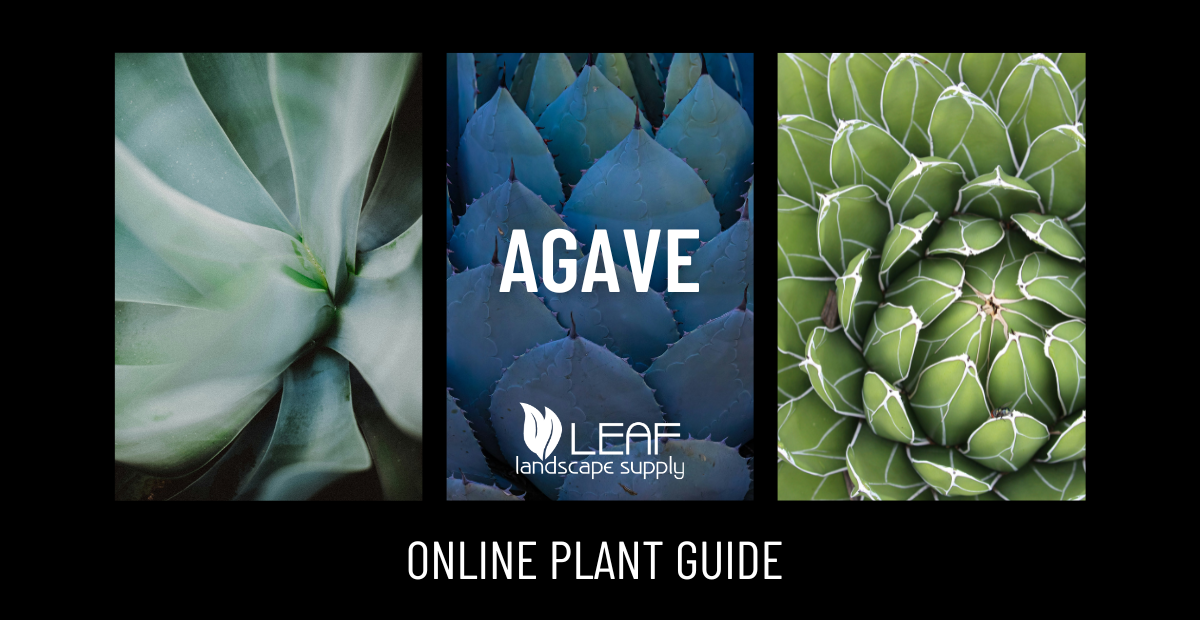
Online Plant Guide | Agave Havardii in Austin, Texas
Looking for a specific item? Check out Leaf Landscape Supply's Online Inventory to see our full selection of onsite inventory. If you can't find what you are looking for, Submit A Custom Request and one our team members can help with a special order for your residential or commercial needs!
Agave Havardii: A Stunning, Easy Austin Addition
If you’re looking to add a touch of Southwestern charm to your Austin, Texas landscape, consider the stunning Agave havardii. This striking succulent is known for its dramatic rosette of thick, gray-green leaves with dark, toothed edges, making it an ideal choice for those looking to create a low-maintenance yet visually impactful garden. In this overview, we will delve into the details of selecting and purchasing an Agave havardii, taking into consideration the local climate for planting and caring for this beautiful succulent from a landscaping perspective.
Selecting the Perfect Agave Havardii
Before purchasing an Agave havardii, it’s essential to understand your local climate and how it may affect the plant’s growth and overall well-being. Given Austin’s hot and arid climate, Agave havardii is a natural fit for the region, thriving in full sun and well-draining soil. When selecting your Agave havardii, look for plants with healthy, firm leaves and no signs of damage or discoloration. Opt for a specimen that is proportionate to your landscaping needs, as Agave havardii can vary in size from compact to quite large, reaching up to 3 feet in height and 4 feet in width.
When purchasing an Agave havardii, consider buying from local nurseries or reputable online vendors that specialize in succulents. This ensures that the plant has been acclimated to the local climate and is more likely to thrive once planted in your garden.
Planting and Care Considerations
Once you’ve selected the perfect Agave havardii for your Austin landscape, it’s crucial to understand the planting and care considerations specific to this succulent. When planting, choose a sunny location with well-draining soil, as Agave havardii is highly intolerant of waterlogged conditions. Additionally, ensure proper spacing between plants to accommodate their mature size, allowing for optimal air circulation and reducing the risk of disease.
When it comes to care, Agave havardii is relatively low-maintenance, requiring minimal water once established. However, during the initial planting and establishment phase, provide regular waterings to help the plant develop a strong root system. Additionally, apply a layer of mulch around the base of the plant to retain soil moisture and suppress weed growth.
In terms of fertilization, Agave havardii is not a heavy feeder and can thrive without regular fertilization. However, applying a balanced, slow-release fertilizer in the spring can provide a boost to the plant’s growth. It’s important to avoid over-fertilizing, as this can lead to rapid, weak growth and diminish the overall health of the plant.
Landscaping Design Ideas
Incorporating Agave havardii into your Austin landscape can open up a myriad of design possibilities. Due to its striking appearance, this succulent is often used as a focal point in xeriscape gardens or arid landscapes. Its sculptural form and unique texture make it an ideal companion to other drought-tolerant plants such as yuccas, cacti, and ornamental grasses. Consider planting Agave havardii in rock gardens, containers, or as a standout feature in a succulent bed.
Furthermore, the architectural qualities of Agave havardii make it an excellent choice for modern and minimalist garden designs. Pair it with clean lines, bold structural elements, and neutral color palettes to create a contemporary outdoor space that is both visually striking and water-wise.
By strategically placing Agave havardii in your Austin landscape, you can achieve a harmonious balance between its striking beauty and the surrounding natural elements, creating a captivating and sustainable outdoor environment.
Final considerations
The Agave havardii is a wonderful addition to any Austin landscape, offering a combination of beauty, resilience, and low-maintenance care. By selecting a healthy specimen, acknowledging its planting and care requirements, and integrating it into thoughtful landscape designs, you can enjoy the striking presence of this Southwest native in your garden for years to come.
Plant Nursery (Archives)
